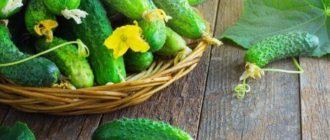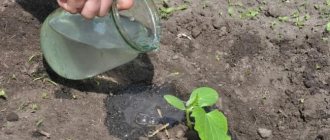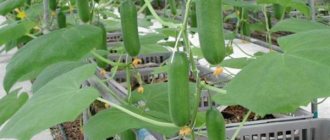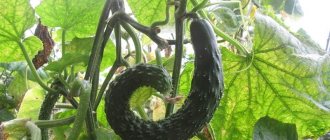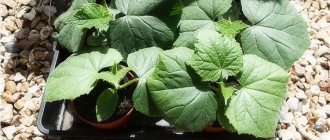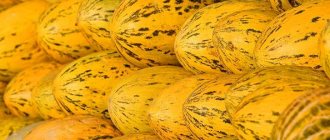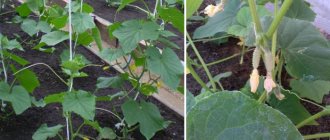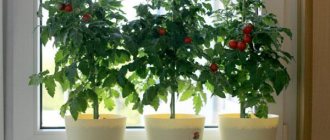How to properly pollinate cucumbers at home
To grow a good harvest in a greenhouse, you must monitor how the plants are pollinated. For the convenience of many summer residents, there are self-pollinating cucumbers. They are called parthenocarpic. But most varieties are insect-pollinated. Therefore, you should help them with pollination. In the open ground, this is done by insects and the wind.
How to pollinate cucumbers in a greenhouse is a question that interests many summer residents, because the harvest depends on quality pollination.
There are several ways for pollination:
- Attracting insects.
- Hand pollination.
Growing and caring for tomatoes in a greenhouse
The tomato is perhaps the most long-awaited and beloved fruit on our table. Juicy, delicious tomatoes were brought to Europe from South America. Tomatoes were grown in the old days as a decorative decoration, and only later did they begin to appear on the tables of wealthy rulers.
Tomato seedlings begin to be planted in early spring, then after a month or two they are hardened off, and at the end of spring, beginning of summer they are planted in a greenhouse.
Nowadays, tomatoes are grown not only by professional agronomists, but also by amateur summer residents. By taking this issue seriously, you can achieve excellent results by growing tomatoes in a greenhouse. Caring for these wonderful fruits is a rather interesting and labor-intensive process. To get a good harvest of tomatoes in a greenhouse, you need to prepare the seeds for sowing, pick up the seedlings on time, water correctly, maintain the appropriate temperature, ensure good pollination of the flowers, and feed the plants in a timely manner.
Seed treatment before sowing
Seed processing for sowing is carried out in 4 stages:
Tomato seeds require preliminary preparation before planting.
- Warming up the seeds.
- Caring for seeds when treated with chemicals.
- Soaking in clean water.
- Hardening of seeds.
For rapid seedling growth, it is recommended to heat the seeds at a temperature of 45-65 degrees for 3 hours. This procedure can be carried out near a battery or on special heating devices. But the main thing here is to observe moderation: excessively high temperature can damage the structure of the seed.
After warming up, the seeds are treated with chemical solutions to avoid possible diseases of young plants. First, the seeds are treated with a solution of pharmaceutical manganese in a proportion of 1 g of manganese per 1 glass of water. In a fabric bag, the seeds are soaked for 15-20 minutes in the prepared solution and then washed with water. The seeds are then soaked in a solution that promotes their nutrition and development. In 1 liter of water, dilute 1 tablespoon of ash, or Ideal liquid fertilizer, or ¼ teaspoon of sodium humate. Tomato seeds are dipped into one of the prepared solutions for 12 hours. Before treating with chemicals, it is very important to carefully read the instructions for using chemicals and maintain the required proportions. Since improper care using the compositions can cause great harm to human health.
After chemical treatment, the seeds are placed in clean water or in a solution of boric acid (0.2 g per 1 liter of water) for 12 hours. It is important that the solutions and water are at a temperature of 24-25 °C.
The productivity of tomatoes directly depends on the correct care of the seeds.
Seeds are hardened in the refrigerator for 1-2 days at a temperature of +1°C, periodically spraying them with water. After all procedures, the seeds are immediately sown in the soil.
Tomato seeds are sown from February 5 to February 25 in boxes, each variety separately. The soil for growing seedlings is prepared as follows: take 1 part of turf soil, peat and humus. To the finished mixture add a liter jar of river sand, 1 tablespoon of superphosphate and the same amount of wood ash.
The resulting mixture is thoroughly mixed 6-7 days before sowing, then distributed evenly into seedling boxes. In the boxes with soil, grooves are made, the depth of which is 1.0-1.5 cm. The distance between the grooves should be at least 5-7 cm. Water the rows with a solution of sodium humate, the temperature of which is 35-40 ° C. Seeds are sown in prepared rows. The distance between future plants should be at least 1.5-2.0 cm. The furrows are filled without watering from above. Boxes with crops are placed in a warm, bright place, with an air temperature of 22-24 ° C. In order for the plants to begin to sprout faster, it is recommended to cover the boxes with film.
Caring for seedlings: temperature, watering, fertilizing
During the first 3 weeks of sprouting tomato seedlings, you only have to control the humidity and temperature conditions. The temperature during the day should be maintained at 16-18 °C, and at night - 13-15 °C. Such care should be provided before the second leaf appears on the plant, within 30-35 days from the start of germination. During all this time, the seedlings need to be watered only 3-4 times. This is explained by the fact that during the period of low light, which falls in March, excessive soil moisture will provoke excessive elongation of seedlings. Water the seedlings with warm water, at a temperature of 20°C, under the roots, without getting on the leaves.
The boxes with seedlings should be turned the other side towards the window every day so that the plants receive enough light. The seedlings should be well ventilated, so boxes with seedlings should not be placed very close to the window glass. At first, while the seedlings are growing in a common box, there is no need to feed the soil.
The most important growth conditions for seedlings in the first three weeks are temperature and the required humidity.
A month later, when two or three leaves appear on the seedlings, the first picking is made - transplanting each plant into a separate pot. The pots into which tomato seedlings are planted for the first time should be 8x8 cm in size. There the plants will develop for about 25 days. The soil for picked seedlings is prepared in the same way as for sowing seeds. Before planting plants in pots, water the soil with a solution of potassium permanganate, in the proportion of half a tablespoon per 10 liters of water. When picking, weak and unsuitable plants are rejected.
Pickled seedlings are grown at a temperature of 20-22 °C during the day, and at night - 16-18 °C. Seedlings in pots should be watered no more than once a week until the soil is well soaked. 2 weeks after picking, tomato seedlings are fed with the following solution: 1 tablespoon of nitrophoska is diluted in 10 liters of water. For 1 pot there is half a glass of fertilizer.
After 3-4 weeks, the seedlings are picked a second time into large pots measuring 12x12 cm. Caring for the seedlings after the second picking is the same as after the first. The second picking is necessary to inhibit plant growth, since it is necessary to achieve the growth of strong, stable plants, and excessive stretching of the stems makes the seedlings fragile and vitally unstable.
The next feeding is carried out 15 days after the second replanting. To prepare the fertilizer composition, take 1 tablespoon of superphosphate and potassium sulfate and dilute it in 10 liters of water, stirring thoroughly. One pot should be watered with 1 glass of the resulting solution. After 15 days, re-feeding is carried out.
Before planting, the seedlings begin to harden. It is taken out to the balcony at a temperature not lower than 12°C, covered with film at night.
To grow a strong bush, the top part of the plants is cut off. Shoots—stepchildren—appear from the axils of the lower leaves. The two upper stepsons are left, the remaining lower ones are removed. In this way, the plant is formed into 2 shoots, which, when planted in the ground, will be tied to a trellis. The pinching procedure is carried out 20-25 days before planting in the ground.
Before planting the seedlings in a permanent place, at the end of April, they begin to harden them. On warm days, seedlings are taken out to the balcony at a temperature of at least 12°C, covered with film at night. Hardened, healthy seedlings have a bluish-purple tint.
Seedlings ready for planting should have 8-12 leaves and one or two inflorescences, while the plants themselves should reach a height of 20-35 cm.
Planting tomatoes in the ground
Caring for tomatoes that are planted in a greenhouse is more difficult. It is necessary to monitor soil moisture and ambient temperature conditions.
Ripe seedlings are planted in a greenhouse in the first half of May. When planting tomatoes, it is unacceptable to plant them in the same place for several years, in order to avoid diseases. You cannot plant tomatoes after potatoes and eggplants, since these crops are of the same nightshade family, and therefore they have the same diseases. If you still have to plant tomatoes after the listed crops, then before planting you should remove the topsoil from the greenhouse, and then sprinkle the soil with a hot solution of copper sulfate.
To grow good fruits in a greenhouse, beds are made, the distance between which is 60-70 cm. Humus, peat, sawdust and a little sand are added to the beds as fertilizer. Before planting tomatoes, water the soil with a solution of potassium permanganate: 1 g of potassium permanganate per 10 liters of water.
Seedlings are planted vertically; only the pot with the roots is immersed in the ground. The distance between the bushes of tall varieties of tomatoes should be 50x50 cm, while the plants are planted in a row or in a checkerboard pattern. When planting, you should avoid a distance of 80-90 cm from each other: this will reduce the yield! This is explained by the fact that a free plant branches heavily, that is, all the nutrients will go not to the development of fruits, but to the foliage system.
10-14 days after planting, the tomatoes are tied to a trellis. The lower stepsons are removed, leaving columns of 2-3 cm.
Before flowering and fruiting, tomatoes are watered once every 5-6 days. During the growing season, feeding plants is especially important. Tomatoes are fertilized with liquid mullein or ready-made fertilizers “Ideal” and “Fertility” every 10-15 days. To increase fruit ovaries, tomatoes are sprayed with a 10% boric acid solution on flower brushes and leaves.
Tomatoes must be cared for at a humidity level of no more than 65%. It should be remembered that tomatoes do not like high humidity. Watering should be moderate in the evening and at the root, since water getting on the leaves is undesirable, especially on a sunny day. You should also observe the temperature regime in the greenhouse: 20-28 °C during the day and 15-16 °C at night.
Tomatoes in a greenhouse should be illuminated by the sun from morning to evening; any shadow reduces yield. Tomatoes are very light-loving plants. Tomatoes are not afraid of cold weather. The greatest enemies for these plants are frost and dampness. Therefore, you should not forget about ventilation in the greenhouse. With the onset of stable sunny weather, the greenhouse can be opened to 1/3 of the upper part of the end sides. On hot days, you can fully open the western part of the greenhouse before it gets colder. Such actions will promote good ventilation and access for bees during the flowering period.
Flowering and pollination characteristics of tomatoes
Growing tomatoes in greenhouses makes it difficult for bees to access the flowers, making pollination less effective. You can also pollinate tomato flowers manually by gently shaking the clusters of inflorescences. Shaking the flowers is done once every 3-4 days in warm sunny weather. In order for pollen to germinate on the stigma of the pistil, pollination must be accompanied by spraying the flowers with water. After spraying, the greenhouse is ventilated to prevent waterlogging of the soil and air, since an increase in moisture reduces the taste of the fruit and the sugar level in the tomatoes.
Manual pollination is used as an additional method; bees undoubtedly do the best job of pollination. Pollination with the help of bees significantly increases yields, since tomato pollen is sticky, which prevents the flowers from pollinating on their own. Tomato flowers have no nectar or smell, so the latter are “trained” to attract bees. Pollination of tomatoes is carried out by bee colonies that pollinate cucumber flowers. Hives with bees are transferred to greenhouses with flowering tomatoes and the insects are fed with syrup flavored with tomato flowers. This way the bees will work intensively in the tomato greenhouse. However, with the flowering of other fragrant honey plants, bees may move to them. To prevent this from happening, tomatoes should be grown so that they begin to bloom before other pollen-bearing flowers.
Many agronomists use a little secret to attract pollinating insects to the greenhouse: they hang a container of jam, honey or other sugary delicacy at the open entrance. The smell of sweets will attract bees, which will subsequently begin pollinating the tomatoes in the greenhouse.
Early harvest
To obtain early tomatoes, seedlings begin to be grown as early as possible. Typically, in tomatoes, depending on the variety, the interval between germination and fruit ripening is 120-130 days. Improving external conditions: good light, sufficient heat and moisture, good soil composition, timely fertilizing, proper care will help to grow a tomato crop 10-20 days earlier. Earlier seedlings have time to strengthen the stem faster and produce a larger harvest than young and fragile ones. When sowing seedlings, it is important to consider the area where the plants will be grown. In northern regions, where short, cold summers prevail, seedlings should be sown 70-80 days earlier. In this case, artificial lighting and the required temperature conditions are used.
Caring for tomatoes is quite a responsible and troublesome task, but harvesting these beautiful juicy fruits brings much more pleasure and benefit. After all, tomatoes are famous not only for their excellent taste, but also for their content of vitamins, minerals and many other elements necessary for the human body. Due to the content of potassium, iron, folic acid, tomatoes are extremely beneficial for the cardiovascular system, improve the functioning of the gastrointestinal tract, strengthen the overall tone of the body and improve overall health.
ParnikiTeplicy.ru
Attracting insects
The basis of the method is to attract bees to the greenhouse. Plants are sprayed with a sweet solution.
For this you will need:
- Warm water 1l.
- Honey, sugar or jam 1 tbsp. spoon.
- Boric acid 0.1 g.
It is necessary not only to attract the smell, but also to help them get into the greenhouse. To do this, open windows and doors. The main thing is not to the detriment of the room temperature and humidity.
If possible, you can have a whole family of bees. Position the hive so that it stands at a height of 40 cm, and is well warmed in the morning sun. Insects must be well oriented; first, they should get used to their surroundings. They are released into a warm greenhouse when there is nothing there yet. Over time, the bee colony will begin its work.
During the flowering of natural honey plants, they need to be provided with flight outside the greenhouse. To do this, a small window is made in the lid; it needs to be whitened around it, this will help the bees easier to find their way back to the hive.
If cucumbers are grown in early spring, then the house with the bees is placed in a greenhouse. If in warmer times, the hive is left outside, pressed closely against the wall of the greenhouse, providing them with unobstructed entry. The hole made in the wall is aligned with the entrance to the hive. So insects will fly around the greenhouse, fly out of it into the street, through the window on the roof.
See also
Description of the cucumber variety Son of the Regiment, features of cultivation and careRead
Difference between male and female flowers
If there is no way to attract insects, then cucumbers pollinate on their own. The main thing here is to understand the flowers on the plant. There are men's and women's. It is not difficult to distinguish them from each other.
The male flower does not have a pistil, but it contains a lot of pollen. If you shake it lightly, it forms a whole cloud. They are located closer to the base of the stem and are most often grouped in several pieces.
The female flower contains a pistil. Most often located on side shoots. It differs from the inflorescences of the opposite sex in that it contains a slight thickening that resembles a small cucumber.
Why do cucumbers produce empty flowers?
For this crop, the pollination problem is somewhat more acute than for tomatoes. The thing is that cucumber is a dioecious plant, i.e. It is necessary that the pollen, which was formed in the stamens of the male flower, fall on the pistil, which is located on the female flower.
Give barren flowers, i.e. a male flower that does not form an ovary can only be produced by “traditional” bee-pollinated varieties of cucumbers. “Parthenocarpic” cucumbers are completely unfamiliar with the problem of barren flowers for the simple reason that all their flowers are female and in principle do not need pollination.
- Parthenocarpic and self-pollinating cucumber varieties for an unprecedented harvest - myths and truth
Many gardeners still confuse these concepts and are “led” by the beautiful promises of sellers.
As for pollinating “ordinary” cucumbers, help may be needed here. However, before you start pollinating cucumbers, you should check whether you have met all the conditions necessary for the plant to produce a sufficient number of female flowers. If there are too few of them, then you can’t count on a rich harvest.
- Monitor the quality of the seed and do not use seeds obtained from hybrids for propagation, because very often the second generation of such plants produces a large number of barren flowers.
- Having collected seeds for propagating cucumbers in your own garden, let them “infuse” for 3-4 years.
- Water the cucumbers with warm water (25-28°C) in the morning or evening before sunset, but be careful not to overwater.
- It is believed that air temperatures above 27°C prevent pollination.
- Follow the rules for forming bushes. By pinching early-ripening bushes after 8-10 leaves, and late-ripening bushes after 6-8, you will stimulate the growth of lateral vines, on which, in fact, female flowers are formed.
- Do not “overfeed” cucumbers. Follow the fertilizing schedule and remember that with the beginning of flowering, nitrogen must be excluded from the cucumber “menu”. Otherwise, the plant will begin to intensively grow green mass without producing ovaries.
- 8 reasons for empty flowers on cucumbers and how to deal with them
Problems rarely arise when growing cucumbers. However, even this culture sometimes makes summer residents nervous. The reason is barren flowers on cucumbers.
Conditions for fruitful pollination
To pollinate a plant, you need to comply with certain requirements:
- The percentage of humidity in the greenhouse must be taken into account. No more and no less than 70%. At higher humidity, pollen sticks together, at low humidity it dries quickly.
- It is best to carry out self-pollination early in the morning or at the latest before lunch, no later.
- Female flowers are ready for pollination on day 2. Therefore, the process is carried out on the second day, so it is more likely that the process will go correctly and fruitfully.
- If it is intended to carry out varietal pollination, then the female flowers, before pollination, are protected from unwanted penetration of insects into them.
- Those flowers that self-pollinated should be marked somehow. To make sure everything went right.
Manual method
Pollinating cucumbers in a greenhouse by hand is a difficult method, but effective.
Two important rules of pollination:
- There should be a lot of pollen.
- It is best to take pollen from one plant and use it to pollinate flowers from another bush.
By complying with all the necessary requirements, any summer resident will be successful.
- The first method is to pollinate using a regular brush. To do this, pollen is very carefully removed from the male inflorescence and transferred to the female flower directly to the pistil. Then you should cover the pollinated flower. You can use cotton wool or other available materials for this.
The brush must be made of natural bristles, preferably very soft. To avoid damaging the delicate flowers of cucumbers.
- Second method, male flower. It can be used as a pollinator. To do this, it is carefully torn off and the petals are removed from it. Then it is placed in a female flower; it can be left in it until the ovary grows. Several flowers are used.
See also
How to make a bed for cucumbers in open ground with your own handsRead
It is recommended to pollinate cucumbers by hand several times during the week, then the result will be guaranteed. If the ovaries begin to grow, the flowers are considered pollinated.
Manual pollination technology for cucumbers
There are two main technologies with which cucumbers can be pollinated. It is recommended that you familiarize yourself with their main features in advance in order to understand how to use them in practice.
See also
Characteristics and description of cucumbers of the Claudia F1 variety, yield and cultivation
Read
Pollination by flower
Gardeners who decide to pollinate cucumbers themselves use a male flower for this. First, it is carefully plucked from the bush, after which all its petals are torn off. Then you need to gently touch the stamens with your palm so that pollen remains on its surface. After this, the palm touches the pestles.
To ensure that the plant is accurately pollinated, you can shake the plucked male flower near the female one. All pollinated flowers must be marked with a marker.
Pollination by brush
The most common method of transferring pollen from flowers that have begun to bloom. It is recommended to use brushes with natural and soft bristles that will not damage the flowers.
When performing the procedure, pollen is carefully collected from the flower. In this case, you need to make sure that it settles on the bristles of the brush. The collected pollinator is then carefully transferred to the female pistil.
Self-pollinating varieties
Many summer residents do not like to grow cucumbers of self-pollinating species. This is due to the fact that they have a taste uncharacteristic for the crop, light stress can reduce the yield of the bush, and the plants are dependent on changes in external growing conditions.
But despite this, pollinating the plants yourself is quite labor-intensive, so gardeners buy hybrid varieties. Most often this is:
- Zozulya.
- Emelya.
- Hermann.
- Millionaire.
- Summer resident.
- Dynamite.
Experienced gardeners advise using a specific planting scheme for cucumbers when growing in greenhouse conditions. The very first to be planted are early hybrids of self-pollinating varieties. The majority of crops in a greenhouse should be insect-pollinated plants. The last to be planted are mid-ripening cucumber species.
Growing cucumbers at home in this way will protect the summer resident from loss of harvest.
Which varieties require pollination?
Now let’s figure out which varieties need intervention and which don’t. To make it easier to obtain information, I placed notes in a table. I think it will be convenient.
| Name | Characteristics and features | Is pollination necessary or not? |
| Matilda | It gives a harvest already after 55 days after planting. It is convenient to grow at home, since the greens of the variety are small (up to 10 cm). The flesh is crispy and juicy. The fruits are well preserved in a edible form after harvesting. Does not like change of environment: transfer from one place to another. | No, nature will try itself. |
| Tom Thumb | The first fruits appear 35-39 days after planting. the bush is small in size, the greens reach a size of up to 11 cm, weight - 50-60 g. They are often used for pickling and preservation. They always turn out delicious. Feels good on the balcony. | Has a female type of flowering, pollination is required. |
| Zozulya | It ripens early, and you will receive a harvest within 35 days after planting. Among all the varieties, I single out this one as a record holder. The fruits are smooth, without thorns, which is convenient for picking. I pick even without gloves: it doesn’t prick at all. And they are even, there are no “ram’s horns”. | Self-pollinating |
| Zyatek | The variety belongs to the gherkin type variety. So the fruits are suitable for preservation: small, elastic, with a pleasant taste and regular shape. The bush also grows miniature, so it won’t interfere with the room. | No, my son-in-law is independent). |
| Benefit | The harvest is ready for harvest in 43-45 days. The fruits are large and massive (from 100 to 120 g per specimen, sometimes a little more). The plant stands out among others for its resistance to diseases and pests. Also adapts to changing climatic conditions. Takes up little space in the apartment. | Pollination is needed. |
| Emelya | Also an early variety. Receive ready-to-harvest fruits within a month. It blooms and bears fruit actively, the harvest is distinguished by the presence of tubercles on the surface. So, when assembling, wear gloves to avoid injuring your skin. | No no need. Your own assistant. |
Author's note
Natalia Papanova
Blog author
When choosing seeds for growing cucumbers, pay attention to the year of production, expiration date and manufacturing company.
Have you met self-pollinating varieties? Great! I recently told you how to properly grow cucumbers on a windowsill, feel free to read!
Not all varieties are suitable for home cultivation, here you need to choose
The privileges of self-pollination
Although this procedure is not easy, many people use it when growing crops in a greenhouse. Cucumbers subjected to hand pollination grow as varietal varieties. You can safely collect seeds from them without worrying about the future harvest.
Self-pollination makes it possible to obtain selected fruits. They are practically no different in taste from those cucumbers that were grown in open ground. In addition, plants practically do not react to temperature changes, insufficient lighting and other signs unfavorable for their growth and development.
The presence of a large number of barren flowers
First of all, this is not appropriate agricultural technology, that is, something was done incorrectly. There may be several reasons:
- The seeds were collected last year.
- Insufficient heating of seeds before planting.
- Lack of light.
- Plants too close to each other.
In order to correct the situation, you can pinch the top of the plant. Thereby provoking it to develop side shoots. And the subsequent formation of female flowers on them.
Obtaining a qualifying harvest from a crop is preceded by a large amount of work with plants. Self-pollination at home is no exception. But the work is worth it, the cucumbers will definitely thank the patient summer resident with their productivity.
Fighting barren flowers
A large number of barren flowers greatly affects the harvest of cucumbers. They may appear for the following reasons:
- cucumber bushes are located close to each other;
- lack of sunlight;
- poor quality planting material;
- non-compliance with sowing deadlines.
To prevent the formation of unwanted barren flowers, it is necessary to pinch the top of the plant. Then side stems with female flowers begin to form. Reducing watering reduces the formation of male inflorescences. After this, mineral fertilizers are added to the soil.
On a note!
It is recommended to pinch the plant above the 6th leaf. Then the proportionality of the cucumber bushes is maintained.
Cucumber bushes need regular pollination to get a rich harvest. This can be done without bees, using a brush or flower. In order to properly pollinate the vegetable, time and temperature conditions are observed. Timely fertilizing allows you to harvest two crops in one summer season.
